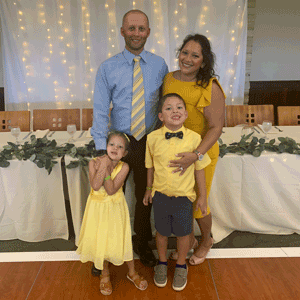From Traumatic Beginnings to Triumphant Outcomes
Traumatic.
That’s how Amy James describes her son Andrew’s first year of life.
Her first born struggled to breastfeed. And when he was able to feed, he spit up lots of it due to reflux. His little body had eczema all over. Twice, he took helicopter rides from his small hometown in Missouri to a larger hospital in Kansas City because he was lethargic and spiked high fevers they couldn’t explain.
When Amy got to the hospital, the chaplain greeted her. The new mom thought that her baby must have died. He had not. But, the doctors had no clue what was wrong with him and sent him home with Amy and her husband, Bob.
“I remember the pediatrician telling us that every three-month period he survived would be a good milestone,” Amy said. “I don’t know if Andrew would have lived this long without the National Foundation for Ectodermal Dysplasias (NFED). In 1988, there was no internet. There was not a thing for us to look up. When he was one and wasn’t getting any teeth, our pediatrician sent us to a pediatric dentist. They did an x-ray which showed the missing teeth. That pediatric dentist asked us, ‘Does he have trouble in the heat?’ I was like, YES! Finally, someone could help.”
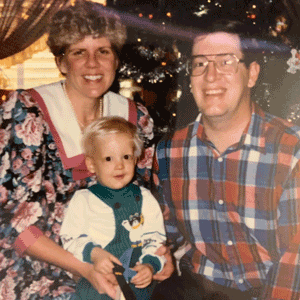
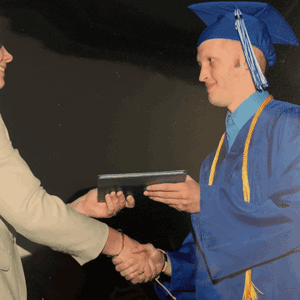
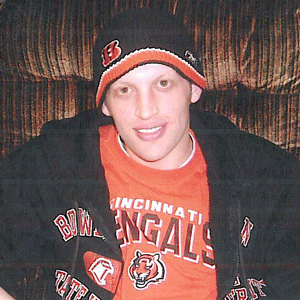
“The dentist had this one paragraph in a medical textbook that described hypohidrotic ectodermal dysplasia,” Amy said. “It talked about the skin, the lack of sweat glands and teeth. And the last sentence said, ‘It may cause mental retardation.’ It was terrible. I walked into our pediatrician’s office with Andrew, without an appointment, and told them the diagnosis.”
Amy and Bob were grateful to have a diagnosis that connected the dots but were devastated. They didn’t know what to do.
“It was May of 1989. A friend of Bob’s mom worked in a little library in Nebraska. Somehow, she researched it and found the NFED for us. I immediately called and talked to Mary Kaye [Richter]. It was such a relief.”
Mary Kaye is the NFED’s founder. Her son, who was 11 years old at the time, has the same diagnosis as Andrew. She calmed Amy’s fears, sent them all of the information the Foundation had, and explained that cognitive abnormalities were not a part of the condition. Mary Kaye connected them with a dentist and geneticist in St. Louis. She gave Amy the emotional support she desperately needed. Most of all, she told her it was going to be ok.
That conversation began a relationship between the James family and the NFED that remains strong to this day.
The NFED saved us so many times. When Andrew was three, I called Mary Kaye to tell her Andrew got his first dentures. I was crying. Mary Kaye said, ‘You are probably sad that Andrew has to go through this,’ which was true. She told me what to do.
Amy James
Amy recalled how difficult it was to get 3-year-old Andrew to wear his first dentures. But Mary Kaye’s tips and encouragement helped.
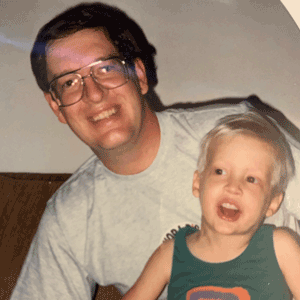
“I was determined he would wear them,” Amy said. “I would hold a beach towel around him because he would gag. First, he had to wear them for 10 seconds, then 20 seconds and finally, it got to 20 minutes. We had prizes, like dinosaurs, when he did it. It was great! After that, he always wore them and never wanted to be without them. It was like a part of him…. I heard parents at conferences say kids wouldn’t wear their dentures. Andrew wouldn’t be caught dead without them. Even if he chips a tooth, he doesn’t want to go out without them.”
Lifelong Friendships Began at Family Conferences
The James family became regulars at Family Conference, attending every year. Amy and Bob planned their summer vacations around the annual event. In the early years, they soaked up the information while Andrew found a group of boys who became his summer buddies.
“For Andrew, there were so many positive things for him going to Conferences,” Amy said. “He saw so many other kids, so he learned he could do this and have confidence.”
Andrew’s first memories of Family Conference are more about the fun he had. Specifically, he remembers that it was a big deal when the Ninja Turtles came to the Conference in Washington D.C. in 1991, when he was three years old. He has fond memories of painting guitars in Cleveland, going to a cave in St. Louis, and eating ice cream.
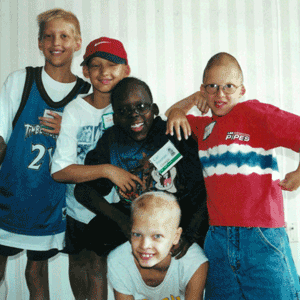
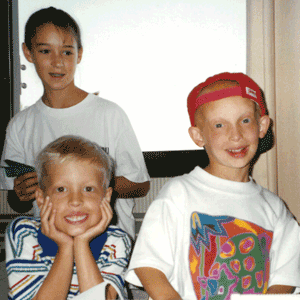
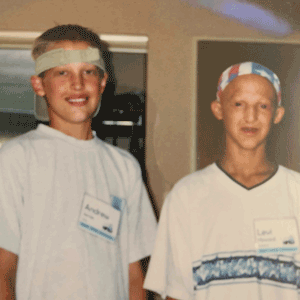
“For me, as a kid, it [Family Conference] was just hanging out with my friends…the usual suspects, Levi Howard, Jason D’Angelo, Quinn Bylsma, Jacob Page and Jacob Moss…there are a lot of them,” Andrew said. “And then Sean [Vora] was a little older than me, but it was nice to have somebody older to kind of guide you a little. He had the right advice for people in general. It was kind of nice.”
Amy and Bob took all three of their kids, Andrew, Caitlin and Zachery, to Conference each summer. Caitlin, their outgoing child, said she loved any trip that involved a hotel! Caitlin became friends with two girls at Conference, Ariane and Rachel, who turned into lifelong pals. In fact, Caitlin was just a bridesmaid in Rachel’s wedding last year. The trio would stay in touch regularly between conferences with three-way calling.
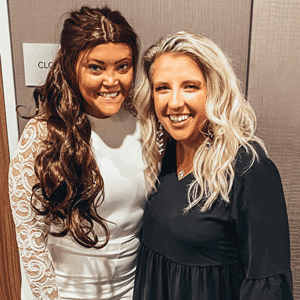
“Rachel and I would convince our parents to let us meet up occasionally or we’d send each other letters in the mail. I just enjoyed having girls to hang out with since I was the only girl at home.”
Caitlin agrees that having the whole family attend Conference is a good idea.
“I think everyone benefits from going to Family Conference,” Caitlin said. “One of my favorite things is, one time we were on an elevator. I think it was in Salt Lake City. And this lady, I think she was a flight attendant, got on the elevator. She goes, ‘Are you having a family reunion?’ I’m over in the corner dying laughing, and I was like, no, not one of these people are related.”
Learning to Live & Thrive with XLHED
As Andrew grew up, Amy turned to the NFED time and again when she needed help.
When Andrew wanted to join the marching band in high school and was going to have to practice for multiple hours in the Ohio summer heat, Amy called the Foundation. Andrew could not sweat, and she was fearful to let him try it. Again, Mary Kaye walked her through strategies on what they could do to help him participate. It worked, and he was in marching band all four years.
With the NFED, I knew I had support all the time. As a mom, I called about insurance, about dentists. I got all of the information and saved it. I think I have every newsletter. I didn’t know when I would need the information in them. Always having that support was wonderful.
Amy James
Caitlin said Andrew’s condition was just a normal part of their lives growing up.
“I guess it never was like strange or anything [Andrew’s diagnosis of x-linked hypohidrotic ectodermal dysplasia]. We spent a lot of time at the pool. He would dunk his shirt in the water, and then put it on. I mean, he played sports and stuff growing up, so I feel like that part wasn’t different. I guess it wasn’t really strange to me. I remember he used to sometimes take his teeth out and like try to scare me when he was mad at me. And I was like, I’m not scared of you!”
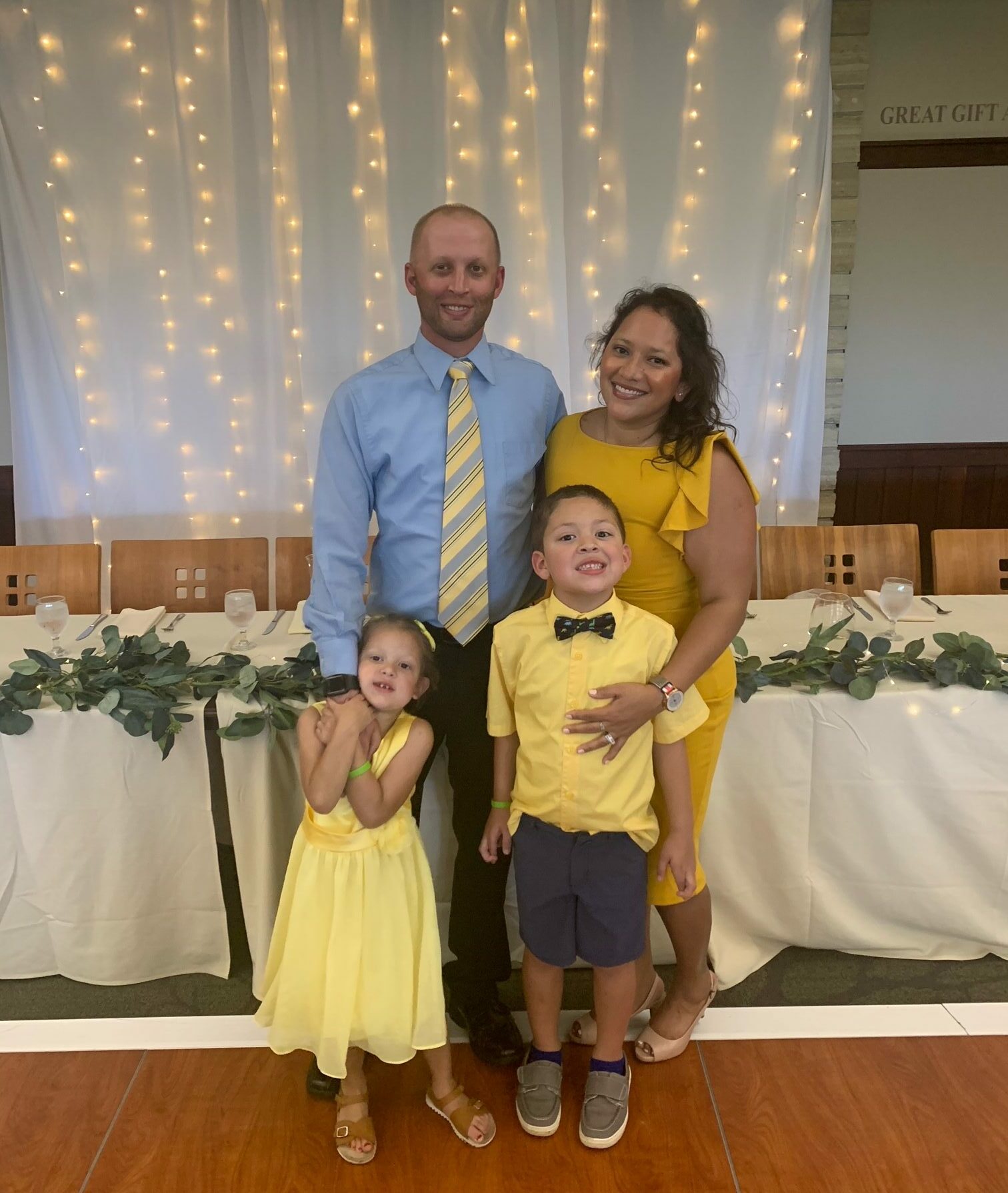
Today, Andrew is 34 years old and teaches 8th grade math in Miamisburg, Ohio. He met his wife, Beca, in a running club. They have two children. Lucy is a spunky, independent four year-old who loves dancing and swimming. As a carrier of XLHED (x-linked hipohidrotic ectodermal dysplasia), she’s missing a few teeth. Lincoln, five, enjoy sports and playing with his friends.
Andrew said that Beca made it easy for him to share about his XLHED condition.
Today, Andrew is 34 years old and teaches 8th grade math in Miamisburg, Ohio. He met his wife, Beca, in a running club. They have two children. Lucy is a spunky, independent four year-old who loves dancing and swimming. As a carrier of XLHED (x-linked hipohidrotic ectodermal dysplasia), she’s missing a few teeth. Lincoln, five, enjoy sports and playing with his friends.
Andrew said that Beca made it easy for him to share about his XLHED condition.
“With running, it was easy to bring up [to Beca] about not sweating when I got hot,” Andrew said. “Then one time, I just told her everything, and she was like really ok with it, which was just nice.”
XLHED Research = Hope
The year Andrew was diagnosed—1989—was the same year that the NFED gave out its first financial grant to a researcher to help him identify the gene for the kind of ectodermal dysplasia that Andrew has. Andrew and his family participated in many different research projects over the years as scientists tried to learn more about XLHED.
Fast forward to 2016. Andrew recalled watching NFED executive director, Mary Fete, on a Facebook Live video. She was giving an update on the XLHED research the Foundation was supporting. She talked about a set of twin boys with XLHED who had received a protein replacement therapy in utero and could now sweat. Having a daughter who is an XLHED carrier, Andrew knew what the potential treatment might mean for future generations of his family.
“I was definitely like watching that, crying, like….just hope!” Andrew remembered. “That does give a lot of hope for the future. I just still can’t believe that anything is working. It’s kind of crazy.”
A Lifetime of Support
Amy reflected on being in the NFED family for the last 30 years.
“The NFED was helpful,” Amy said. “I could talk to other parents, the doctors, the parent panels or call the staff any time. Knowing I had that support was the most important thing about NFED. Without it, we would have felt very isolated. It was easier to advocate for Andrew because of the information and support we had. I didn’t put him in a bubble. I had so many questions when he was little. Going to Conferences, seeing the adults and other kids of all ages, it gave me confidence in raising him. I remember a friend gave me the best compliment. She said that she would forget that Andrew had a condition; that he was just like every other kid.”
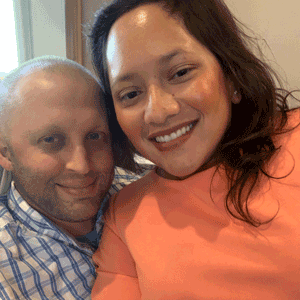
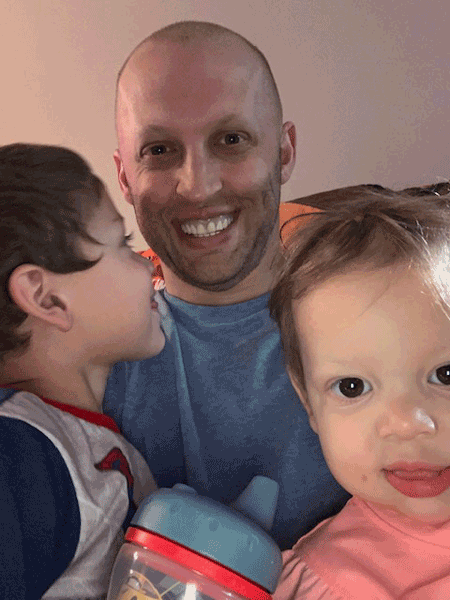
Andrew James’ life went from traumatic to triumphant after his parents found the Foundation. All of Amy and Bob’s dreams for him have come true, and it’s been NFED’s honor to have helped them along the way.
As we celebrate 40 years of providing support to families just like the James family, we are turning to you to help us fulfill our mission to empower and connect people touched by ectodermal dysplasias through education, support and research, into the future. Please join us in making it another 40 with a gift today.
